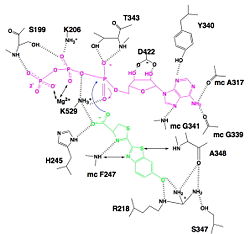loadScript /wiki/extensions/jsmol/j2s/core/package.js
loadScript /wiki/extensions/jsmol/j2s/core/corejmol.z.js
loadScript /wiki/extensions/jsmol/j2s/J/translation/PO.js
loadScript /wiki/extensions/jsmol/j2s/core/corescript.z.js
JSmol exec jmolApplet1 start applet null
Jmol JavaScript applet jmolApplet1__566705227187007__ initializing
Jmol getValue debug null
Jmol getValue logLevel null
Jmol getValue allowjavascript null
AppletRegistry.checkIn(jmolApplet1__566705227187007__)
vwrOptions:
{ "name":"jmolApplet1","applet":true,"documentBase":"https://proteopedia.org/wiki/index.php/Sandbox_Reserved_951","platform":"J.awtjs2d.Platform","fullName":"jmolApplet1__566705227187007__","codePath":"https:/wiki/extensions/jsmol/j2s/","display":"jmolApplet1_canvas2d","loadStructCallback":"manageLoadStructCallback","signedApplet":"true","appletReadyCallback":"Jmol._readyCallback","statusListener":"[J.appletjs.Jmol object]","syncId":"566705227187007","messageCallback":"msgCb","bgcolor":"white" }
setting document base to "https://proteopedia.org/wiki/index.php/Sandbox_Reserved_951"
(C) 2015 Jmol Development
Jmol Version: 14.31.8 2020-09-26 10:04
java.vendor: Java2Script (HTML5)
java.version: 2019-06-08 00:17:46 (JSmol/j2s)
os.name: Mozilla/5.0 AppleWebKit/537.36 (KHTML, like Gecko; compatible; ClaudeBot/1.0; +claudebot@anthropic.com)
Access: ALL
memory: 0.0/0.0
processors available: 1
useCommandThread: false
appletId:jmolApplet1 (signed)
Jmol getValue emulate null
defaults = "Jmol"
Jmol getValue boxbgcolor null
Jmol getValue bgcolor white
backgroundColor = "white"
Jmol getValue ANIMFRAMECallback null
Jmol getValue APPLETREADYCallback Jmol._readyCallback
APPLETREADYCallback = "Jmol._readyCallback"
StatusManager callback set for APPLETREADYCallback f=Jmol._readyCallback cb=APPLETREADY
Jmol getValue ATOMMOVEDCallback null
Jmol getValue AUDIOCallback null
Jmol getValue CLICKCallback null
Jmol getValue DRAGDROPCallback null
Jmol getValue ECHOCallback null
Jmol getValue ERRORCallback null
Jmol getValue EVALCallback null
Jmol getValue HOVERCallback null
Jmol getValue IMAGECallback null
Jmol getValue LOADSTRUCTCallback manageLoadStructCallback
LOADSTRUCTCallback = "manageLoadStructCallback"
StatusManager callback set for LOADSTRUCTCallback f=manageLoadStructCallback cb=LOADSTRUCT
Jmol getValue MEASURECallback null
Jmol getValue MESSAGECallback msgCb
MESSAGECallback = "msgCb"
StatusManager callback set for MESSAGECallback f=msgCb cb=MESSAGE
Jmol getValue MINIMIZATIONCallback null
Jmol getValue SERVICECallback null
Jmol getValue PICKCallback null
Jmol getValue RESIZECallback null
Jmol getValue SCRIPTCallback null
Jmol getValue SYNCCallback null
Jmol getValue STRUCTUREMODIFIEDCallback null
Jmol getValue doTranslate null
language=en_US
Jmol getValue doTranslate null
Note -- Presence of message callback disables disable translation; to enable message translation use jmolSetTranslation(true) prior to jmolApplet()
Note -- language translation disabled
Jmol getValue popupMenu null
Jmol getValue script null
Jmol getValue loadInline null
Jmol getValue load null
Jmol applet jmolApplet1__566705227187007__ ready
script 1 started
pdbGetHeader = true
FileManager opening url https://proteopedia.org/wiki/extensions/Proteopedia/spt/functions.spt?1733933141
loadScript /wiki/extensions/jsmol/j2s/core/coretext.z.js
Loading, please wait ...
platformSpeed = 8
loadScript /wiki/extensions/jsmol/j2s/core/corescriptmath.z.js
loadScript /wiki/extensions/jsmol/j2s/J/bspt/PointIterator.js
FileManager opening url https://proteopedia.org/cgi-bin/infopdb?1LCI
loadScript /wiki/extensions/jsmol/j2s/JU/JSJSONParser.js
loadScript /wiki/extensions/jsmol/j2s/JU/JSONException.js
JSON parser cannot parse NetworkError
Data for 1LCI could not be found.- Using defaults.
Data for 1LCI could not be found.- Using defaults.
cache cleared
[Step 1] pdb_features.ca_p_only is: integer 0
[Step 1] pdb_features.ca_p_only is: integer 0
Loading, please wait ...



